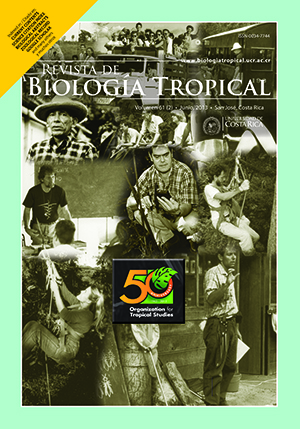Resumen
El establecimiento de la plántula es una de las etapas más riesgosas para las plantas, especialmente en zonas áridas y semiáridas donde la sequía y alta radiación solar influyen sobre su emergencia, desarrollo y supervivencia. Se evaluó en invernadero la supervivencia y variables de crecimiento en plántulas sometidas a estrés hídrico y a distintas condiciones de luz, en cinco especies de Acacia (A. aroma, A. caven, A. atramentaria, A. gilliesii y A. praecox) que coexisten en los bosques xerófilos de Córdoba, Argentina. Aunque se encontraron diferencias entre las especies (F=5.66, p=0.001), todas tuvieron altos porcentajes de supervivencia en las distintas condiciones de luz y agua, sugiriendo que serían tolerantes al estrés hídrico y podrían establecerse bajo luz o sombra. Si bien todas las especies mejoraron el crecimiento con luz y sin estrés hídrico, A. aroma, A. caven y A. atramentaria mostraron una tendencia hacia un mayor crecimiento en la mayoría de las variables consideradas (F=41.9, p<0.0001; F=7.06, p<0.0001; F=53.59, p<0.0001). Estos resultados sumados a otros ya reportados indicarían una diferenciación de nichos regenerativos favoreciendo la coexistencia regional de estas especies en los bosques xerófilos de Córdoba.Comentarios
Descargas
Los datos de descargas todavía no están disponibles.






